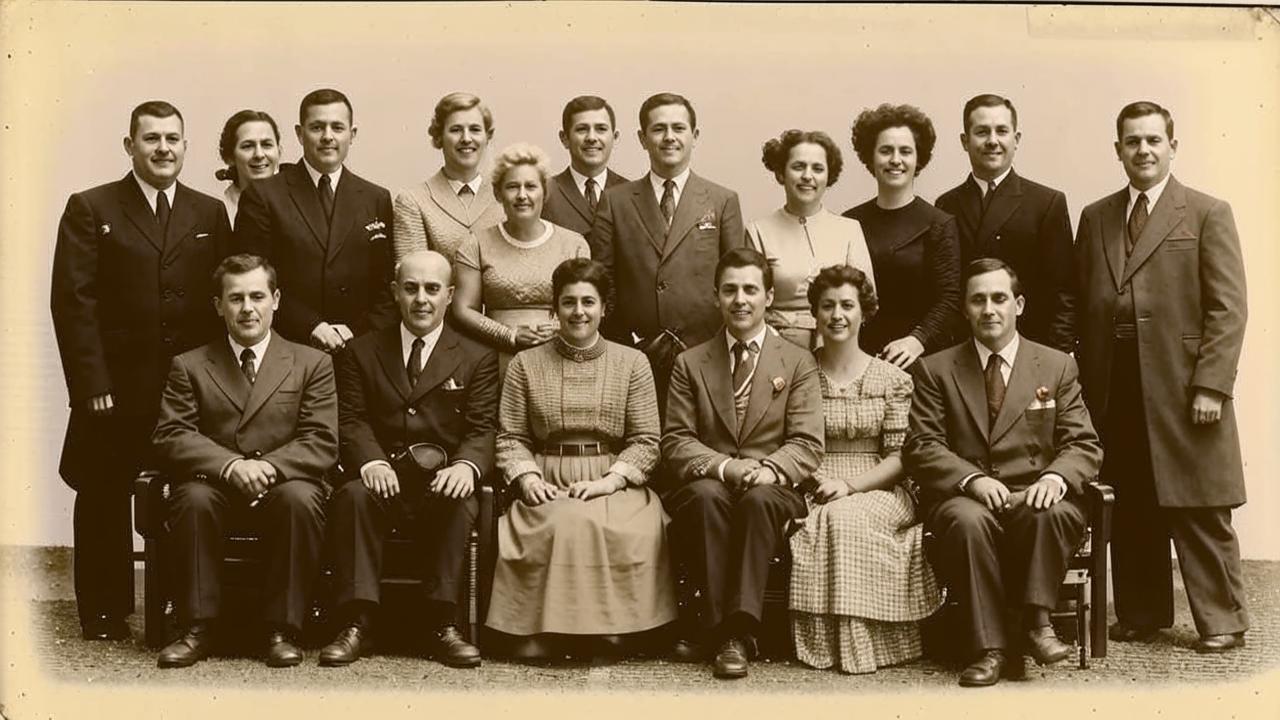
Vodja usposabljanja učiteljev in višji trener mreže baletnih in razteznih studiev LEVITA
"Starost ni ovira za zdravo telo in aktiven življenjski slog. Klasična koreografija izboljšuje počutje, daje občutek lahkotnosti in pozitivnih čustev iz procesa, in kar je najpomembneje - tečaji so na voljo skoraj vsem. Prisluhnite svojemu telesu in priporočilom strokovnjakov ter jo vadite v lasten užitek."
Kaj je klasična koreografija in kako je uporabna?
Profesionalni baletni plesalci vsak dan vadijo klasični ples ali baletne vaje. Vaje jim pomagajo okrepiti mišice in uglasiti telo pred dolgimi urami vaj. Kljub temu je klasična koreografija lahko primerna ne le za plesalce, temveč tudi za ljudi, ki se nikoli niso ukvarjali z vadbo na profesionalni ravni.
Kateri klasični ples je koristen za začetnike:
- Najprej je klasična koreografija dejavnost, ki poteka brez dodatne teže. Zato je varnejša za sklepe in hrbtenico.
- Drugič, med izvajanjem vaj iz klasične koreografije je nemogoče pretirano napihniti mišice - takega učinka treninga se pogosto bojijo številna dekleta.
- Tretjič, najbolj prijetno je, da se lahko kot balerina počutiš v vseh letih. Tečaji vam bodo omogočili, da začutite svojo lahkotnost, izboljšate držo, napnete in okrepite mišice, popravite svojo hojo.
Kontraindikacije za razrede
Pri klasični koreografiji za večino ljudi ni starostnih omejitev. V nekaterih primerih pa se je zaradi zdravstvenih razlogov bolje izogniti aktivnemu treningu. Če imate na primer kronične bolezni v kakršni koli obliki, se morate pred začetkom pouka posvetovati z zdravnikom. Obvezno se pozanimajte, ali vam je dovoljena obremenitev v obliki klasične koreografije.
V številnih kontraindikacijah so tudi:
- povišana telesna temperatura,
- virusne bolezni in okužbe v akutni obliki,
- poškodbe mišično-skeletnega sistema,
- bolezni sklepov.
Bolezni srca in ožilja ter dihal dovoljujejo klasično koreografijo po predhodnem posvetovanju z zdravnikom. Če ni kontraindikacij in je posvet z zdravnikom uspešen, nadaljujte s prvo fazo kompleksa - določitvijo pravilnega položaja telesa.
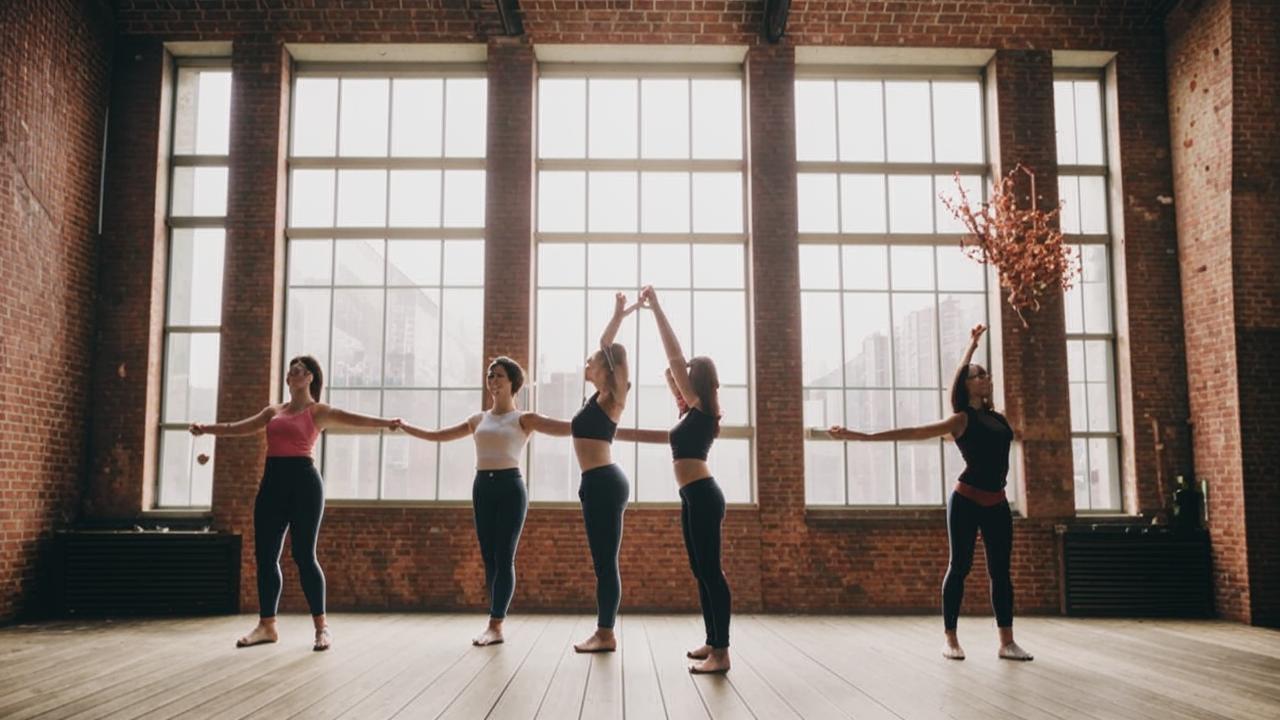
Kako pravilno držati telo med poukom?
Položaj telesa v baletu je temelj, na katerem temelji celoten razred. Izhajajte iz osnove: položaj prvega stopala, položaj druge roke, pete skupaj, prsti odprti v stran. Upoštevajte, da mora biti golenica strogo usmerjena v prste - če se začne "zvijati" naprej, stopala nekoliko "zvijte", prste usmerite rahlo naprej. Stati morate tesno na celotni površini stopala, lok je dvignjen, prsti so kot "prilepljeni" na tla.
Ko boste samozavestno zavzeli ta položaj, začnite zategovati noge in kolena. Boke napnite, zadnjico stisnite, trebuh napnite, medenico pokrčite, repno kost usmerite navzdol. Hrbtenica je potegnjena navzgor, vrh glave se iztegne proti stropu, ramena so odprta in spuščena. Glavna stvar - lopatice ne stisnite skupaj, temveč jih spustite navzdol.
Položaj rok: razmaknite ju narazen, komolec rahlo zaokrožite, da bo usmerjen nazaj, zapestje pa navznoter. Komolec je dvignjen, rama je rahlo spuščena, tako da se lahko kapljica z rame prevesi na kazalec. Če ne morete zadržati drugega položaja rok, jih lahko vedno samo iztegnete v ravnem položaju z dlanjo navzdol ali pa jih položite pri pasu.
Vratni del: Raztegnite ga, vendar ga ne stiskajte, mora biti sproščen. Rahlo dvignjena brada - predstavljajte si, da imate na glavi krono. Izraz obraza je miren in spokojen.
Ko ste oblikovali položaj telesa, preverite, ali ste vse naredili pravilno. To storite tako, da v njem stojite nekaj minut - če začutite, da se vaše mišice postopoma utrujajo in se začnete nekoliko potiti, to pomeni, da ste vse naredili pravilno. Ko se navadite na ta položaj telesa, lahko začnete z vajami.
In ne pozabite na zlato pravilo baleta: ne glede na to, kako težko je vaja izvedena, tega ne sme nihče opaziti. Pri klasični koreografiji gre za lahkotnost in gracioznost vsakega giba.
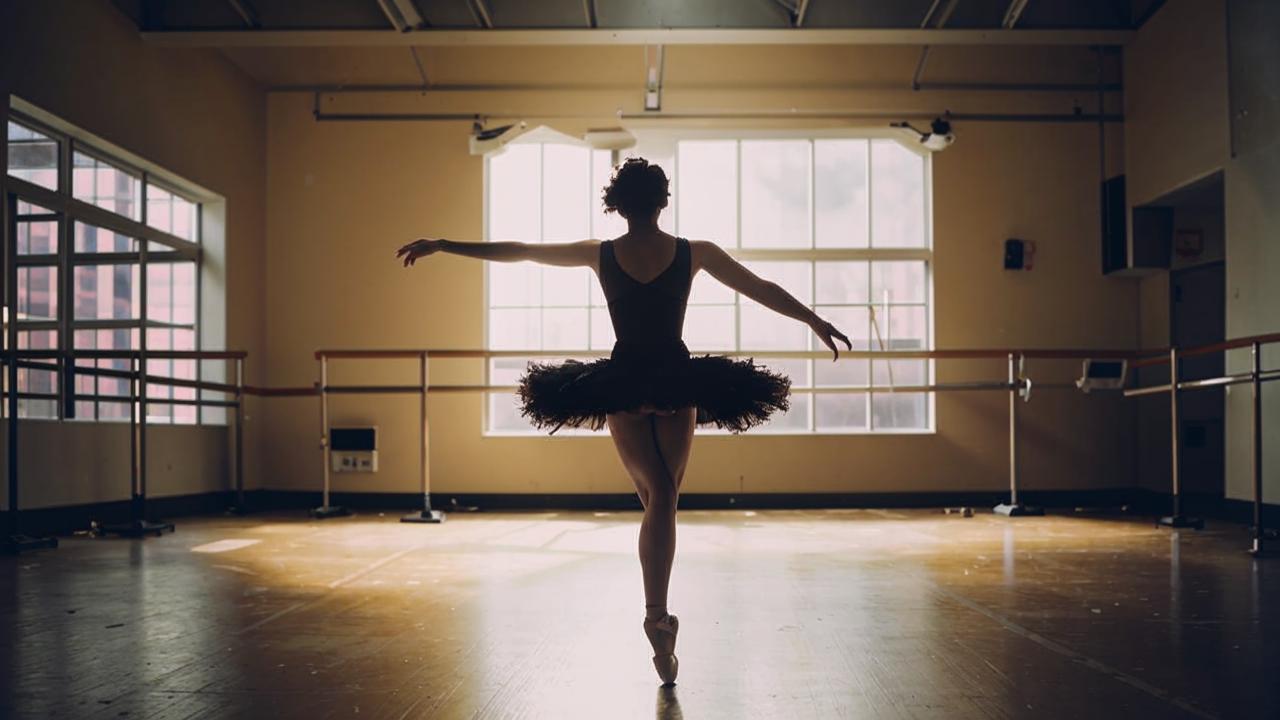
Kompleks vaj za ohranjanje zdravja
Vaja #1. Raztezanje nog v ležečem položaju
Prvo vajo je treba izvesti leže, ne stoje. Je odlična za mišice nog, jih učinkovito krepi in pomaga telesu, da se prebudi. Na splošno pa je to odličen preventivni ukrep, če mišice še niso močne in vas med vadbo motijo manjši krči v nogah ali stopalih.
Tehnika
- Izhodiščni položaj: izvedite ga takoj po zbujanju, ko ležite v postelji.
- Vaša naloga je čim bolj raztegniti mišice nog in stopal. To storite tako, da prste noge potegnete naprej in nogo s silo napnete po vsej njeni dolžini. Mišice nekaj sekund zadržite v največji napetosti in jih nato popolnoma sprostite.
- Nato ponovite gibanje: spet se napnite - sprostite. Če menite, da lahko naredite več, povečajte število ponovitev.
Trajanje: 16-32 krat.
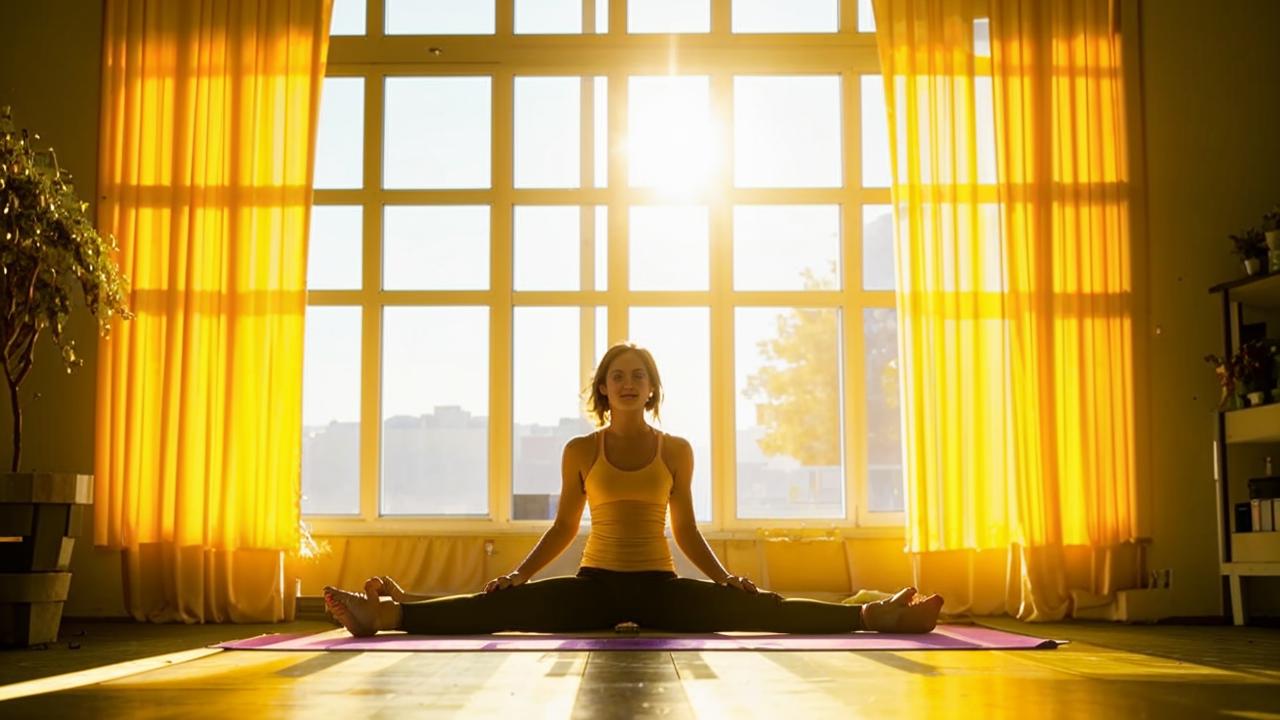
Vaja št. 2. Relevé
Po ogrevanju mišic pojdite k napravi in izvajajte dvige v poltemi ali relevé (iz francoskega "relevé").
Tehnika
- Začetni položaj: stojte obrnjeni proti napravi, če vadite doma, pa na mizi, kavču, okenski polici - na kateri koli površini, ki je v višini vaših reber in na katero lahko nežno položite roke.
- Stopala postavite v šesti položaj: pete so skupaj, prsti so obrnjeni naprej. Noge pokrčite, boke napnite, medenico pokrčite, zadnjico stisnite, repno kost usmerite navzdol, trebuh napnite.
- Raztegnite hrbtenico tako, da je hrbet raven, vrh glave pa kot da bi težil navzgor proti stropu.
- Razmaknite ramena in jih spustite navzdol. Lopatk ne združujte, temveč jih spustite.
- Roke so lahko sproščeno položene na oporo ali pritrjene na pas. Brada je rahlo dvignjena, vrat je iztegnjen in ni stisnjen. V tem položaju vdihnite in začnite z vajo.
- Počasi in nežno odtrgajte pete od tal ter vzporedno iztegnite telo navzgor. Dvignite se na prste na nogah, kolikor lahko. Pomembno je, da se pete ne oddaljijo, temveč ostanejo skupaj. Po dvigu navzgor se nežno spustite navzdol, ne da bi pri tem poškodovali noge.
Trajanje: 8-16 krat.
Najprej to vajo izvajajte počasi: osemkrat se dvignite in spustite. Postopoma povečajte hitrost: dvignite se za dve številki in se enako spustite. Ko boste obvladali relevé, boste lahko pri vsakem štetju izvajali hitre dvige na pol prsta.
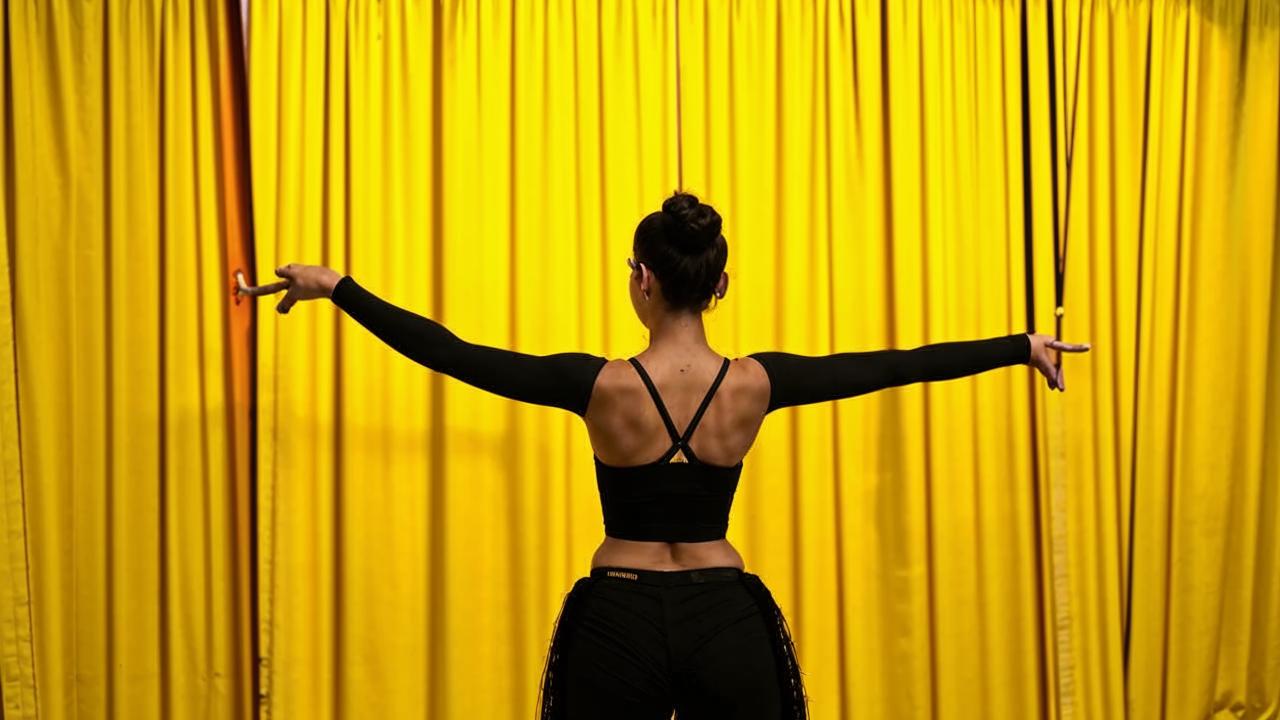
Vaja #3. Por de bras na stroju vstran in nazaj
Port de bras (from French “port de bras”) in classical choreography is a correct passage of hands through the basic ballet positions with turns, head tilts and body movements. Performing this element is not only a good warm-up for the back, but also a great way to work on the mobility of the spine, open the thoracic region and “wake up” the muscles of the back.
An important point: before performing por de bras, you should definitely stretch your legs. How to do it effectively and safely?
- Starting position: the right leg is slightly bent at the knee – it is the support leg, and the left leg is pulled back slightly, feet parallel to each other.
- Start deepening the squat with the support on the right leg until you feel a slight, pleasant tension on the back surface of the left leg. Hold this position for 30-40 seconds and switch legs. This is how you stretch the entire back surface of the thigh.
- Next comes the front surface of the thigh – the quadriceps. Standing on the left leg, bend the right leg at the knee, hold the raised foot with your right hand and pull it up to the buttock. You should feel a tension on the anterior surface of the right thigh. If it is not possible to grasp the foot with your hand, you can use additional means – a fitness elastic band, belt, robe belt and other devices that will help you better reach the foot. Perform the exercise for both legs.
- Move on to warming up your knee joints. Put your feet wider than your shoulders and open them to the sides: heels inward, toes outward. In this position, start rolling, that is, transfer the body weight to one leg, bending it at the knee. Repeat the movements on each leg.
Duration: 4 times.
Now you are ready for the final part – the exercise pore de bras.
Tehnika izvedbe
- Starting position: the first position of the legs, hands lie on the machine, the body is taut.
- Begin to perform bends to the sides: the head turns to the right, there is a bend to the right side.
- In the process, it is important to keep an eye on the shoulders: they must remain open.
- The gaze always looks in the direction where the bend is going.
- To make it easier to understand the amplitude of the movement, imagine that you are leaning over a log that lies at your side. Do the bend for four counts and return to the starting position. Then perform a similar movement on the left side.
- After that, proceed to bending backwards from the starting position. The head is turned to the right, the shoulders are not unfolded, but are parallel to each other.
- Start gently bending backward in the area of the shoulder blades, the belt is fixed, only the upper back works. Slightly withdraw the body, keep the head turned to the side, neck straight, shoulders kept straight.
- Do the incline for four counts and return to the starting position.
- Repeat the exercise again, but with the head turned to the left side.
Duration: 4 times for each side.
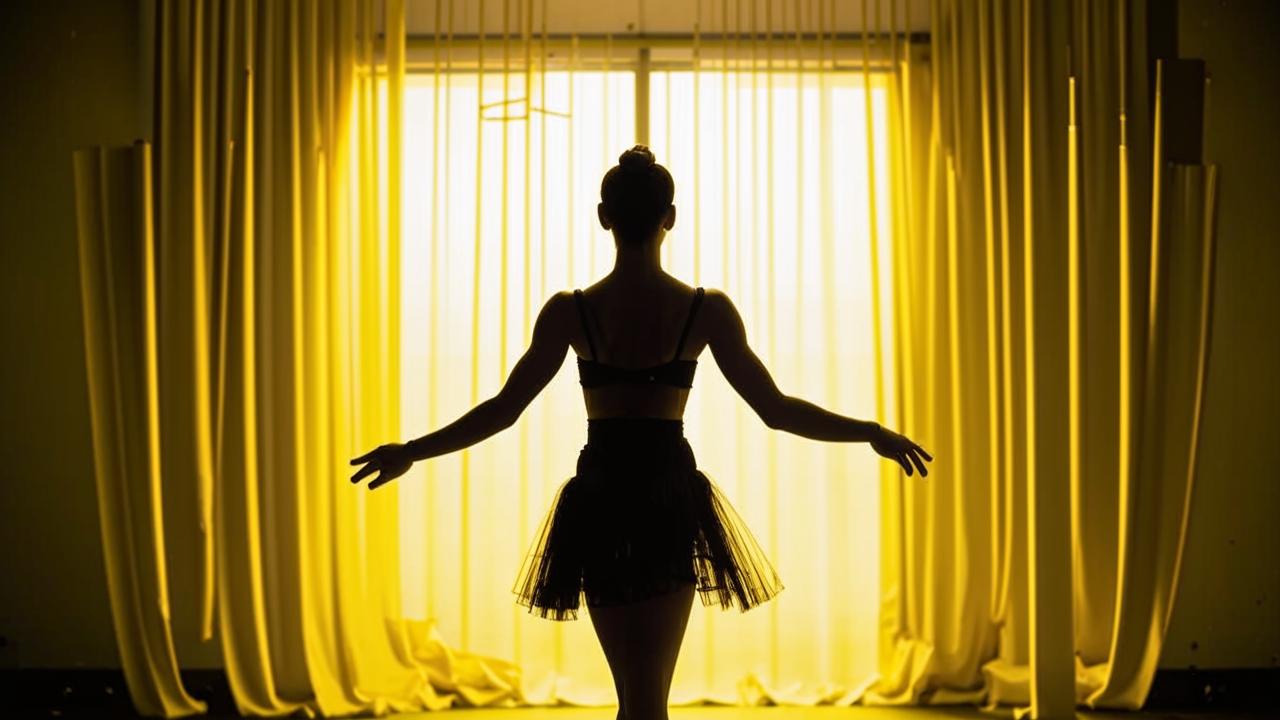
Vaja #4. Plié
Plie (from French “plié”) is a great warm-up after sitting.
Tehnika
- Starting position: you can stay facing the improvised machine or stand with one hand leaning on the machine, and the second hand stretched either in the second position, or just to the side, or put it on the belt. Legs in the first position.
- In this position, start squatting with the tailbone “tucked”. The pelvis is pointing downwards, not backwards – this is an important feature of ballet squats. To make it easier to understand the principle, imagine that you seem to be sliding down the wall: your back is as if pressed against an invisible support and you are lowering your pelvis to the floor. Make sure that your knees are pointed clearly to the sides and do not “fall forward”. Throughout the exercise, keep your heels on the floor.
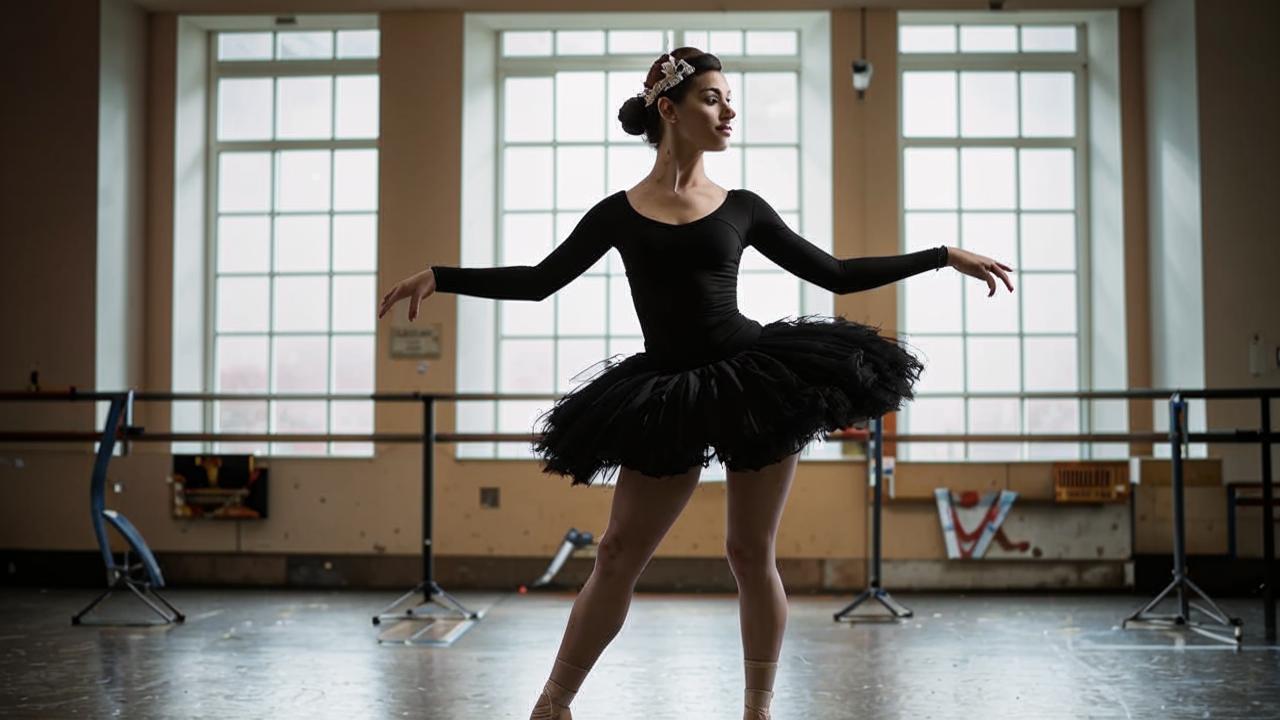
- Squat for four counts until you start to feel that you can no longer hold the position of your heels and will soon start to lift them. After that, go back up, also for four counts.
- Then move to the second position of the legs: they stand so that you can put the full length of your foot between them, heels pointing inwards and toes pointing outwards. In this position for four counts, start squatting down. The more resistance you add to the exercise, the stronger you will feel the results.
- For more effect, when you sit down, imagine that your tailbone is pressing on a tight spring, and when you get back up, you are trying to stretch this spring. In the process, you may feel resistance in your legs and engage your internal muscles more.
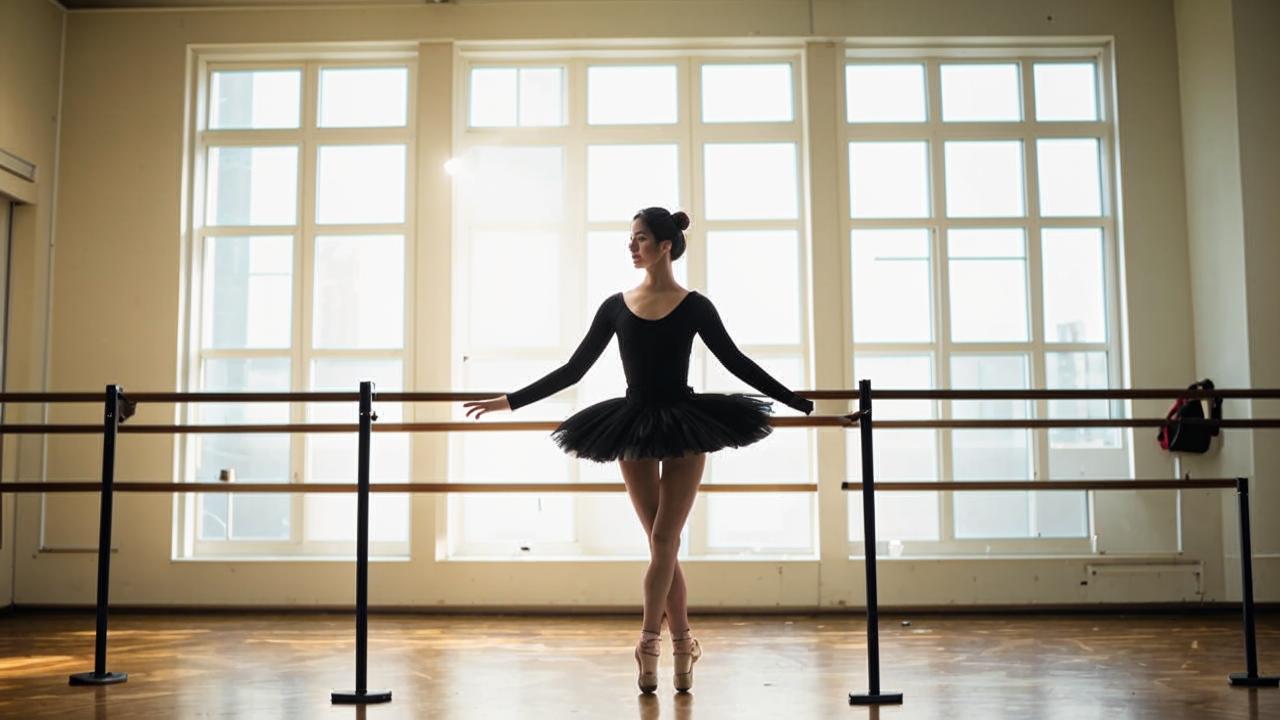
Duration: 4 times for each position.
Vaja #5. Batman tandu
Battement tandu (from French “battement tendu”) strengthens the feet well, preparing them for more complex exercises.
Tehnika
- Starting position: heels together, toes “look” to the sides, the knee joint is directed to the toes. Face the machine or put only one hand on the support, and the other hand is taken to the side or placed on the belt.
- Start sliding your toe on the floor, shifting your body weight to the support leg, which remains in place. Move your free foot forward as if you want your heel to be ahead of your toe.
- Extend the toe as far forward as possible and bring the foot back through the half toe – first the toes touch the floor, then the middle of the foot and finally the heel.
- Carry out such movements of the feet in turn to the side, back and again to the side. In ballet, this algorithm is called “full cross”. Your task is to ensure that in the process the knees do not bend, the feet are maximally stretched. The heel always “tends” forward, and the pelvic bones are on the same parallel with the shoulders.
- When you do the exercise to the side, the foot may go there slightly diagonally forward. To avoid turning the pelvis, you can also move the leg slightly diagonally forward when you do the movement with the leg pulled back.
Duration: 4 times for each leg.
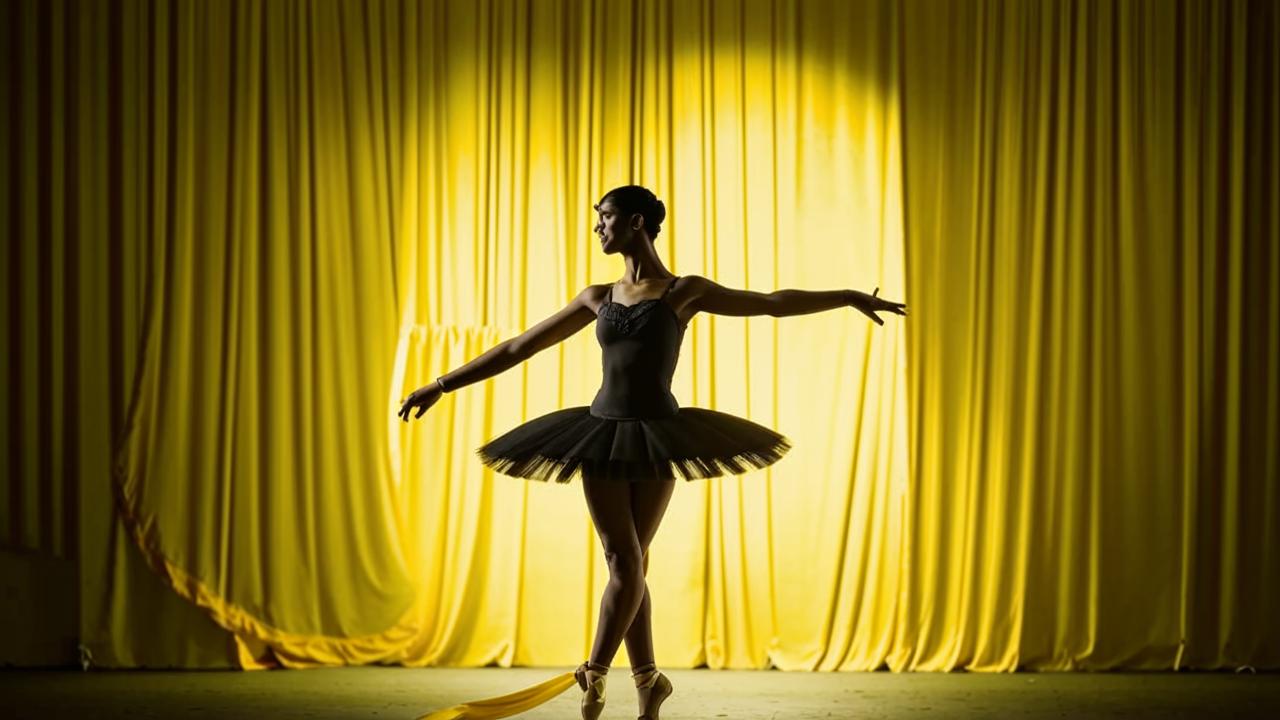
Vaja št. 6. Ronde de jambre anliere (alternativa)
The original exercise (from French “rond de jambe en l’air”) allows dancers to make jumps. In our case we modernize it a little for the desired effect.
Tehnika
- Starting position: stand facing the machine, the right leg is supporting, the left leg is stretched out to the side.
- Raise your left leg up and try to create an angle of 45° above the floor. Orient on your sensations – lift your leg as far as you can. At the same time, the heel of the left foot should be directed to the floor.
- Tighten the body and on the supporting thigh start to squat down, stretching upwards in parallel. Keep your shoulders straight and your supporting side tucked in.
- After you squat down, start bending your left leg at the knee and pull the foot towards the calf of your right leg. Afterward, bring your left leg back in. Perform squats and bends for four counts.
- Make sure that the body does not turn around, the muscles should always be tense.
Duration: 4 times for each leg.
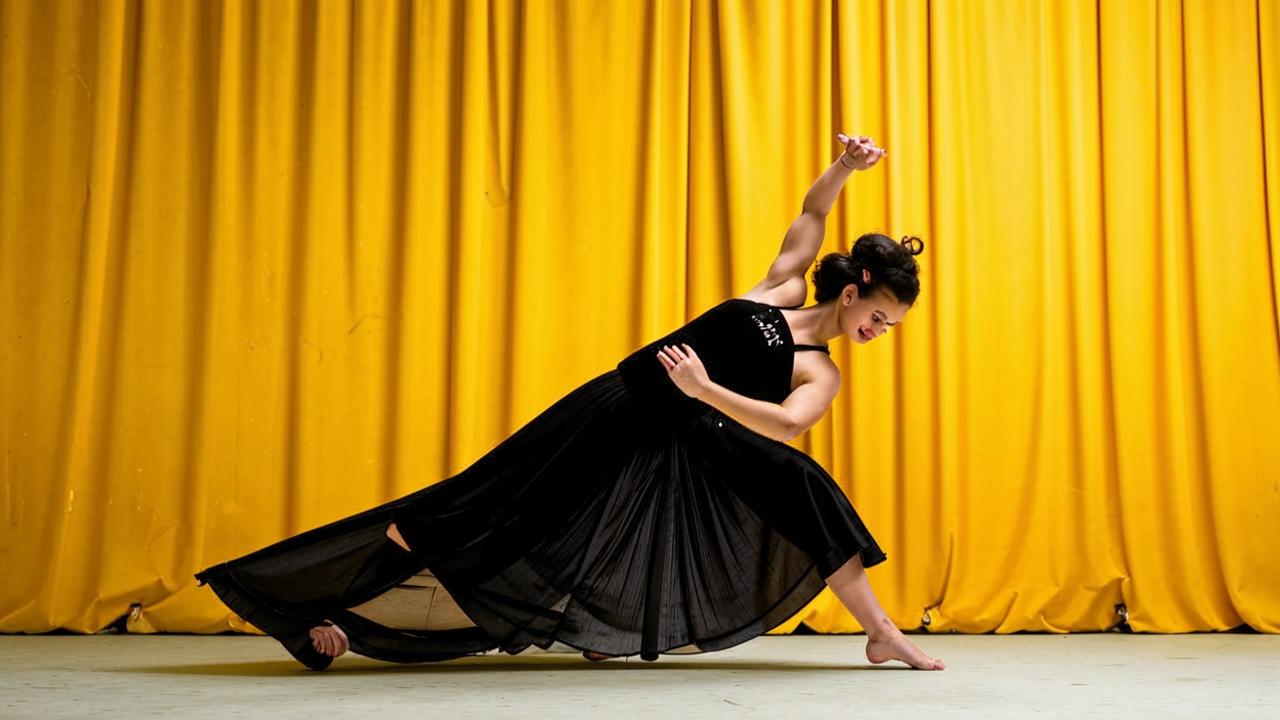
Vaja #7. Adagio (dvigovanje nog)
This smooth exercise (from French “adagio”) combines the elements of relevé and battement tandu. It helps to strengthen leg muscles and to work the inner surface of the thigh due to the eversion position. Performing it backwards also strengthens the glutes. In addition, the cortical muscles are included in the work.
Tehnika
- Starting position: keep one hand on the machine, the second hand is brought out to the side, legs are standing straight.
- Start performing the familiar batman tandyu, bringing the foot to the toe forward. But don’t stop there, but keep lifting it up. Heel pointing to the ceiling, toe tensed, knees bent.
- At the count of 8, lift the leg, also lower it back, coming to the starting position. On the count of 5-6 fix the leg in the raised position, do not lower it immediately. Orient on your sensations: it is not necessary to hold too long.
- Perform the movement several times forward and to the side. Then move to the backward movement of the leg. At this point, for a better understanding of the principle, you can imagine that the working leg and the opposite shoulder are as if bound with a rubber band and trying to get together.
Duration: 4 times per element (for each leg).
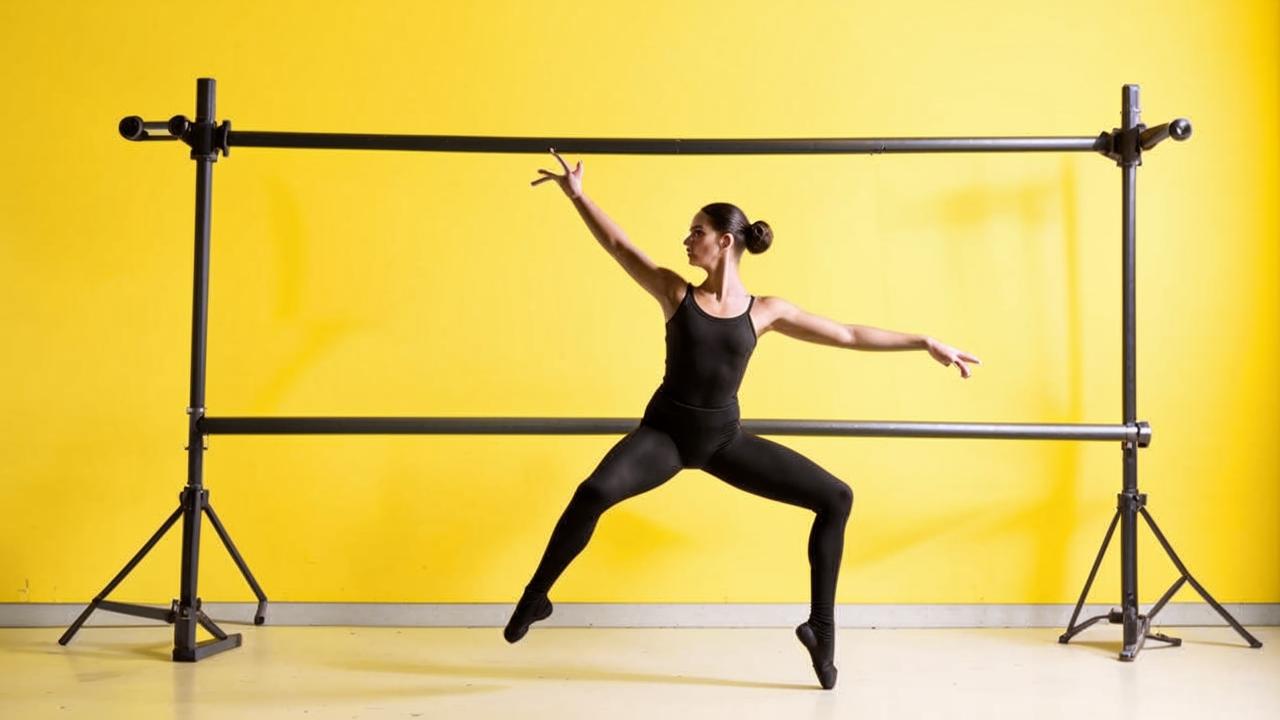
Vaja št. 8. Veliki Batman
Grand battement is one of the basic elements of classical exersis. Just like adagio, it strengthens leg muscles, helps to work on mobility of joints and adds dynamics to the training, and thus increases the general endurance of the organism.
Tehnika
- Starting position: you can hold on to the support with one hand, you can turn your back to the support and put both hands on it. Shoulders are straight, the position of the body as in the previous exercise.
- Now you should not slowly, but sharply throw your leg upwards. On the count of one throw it out, on the count of two return it. Do the movements each time through sliding on the floor as if you want to wipe it. Make sure that your knees are not bent and your legs are straight. Do the swings as hard as possible.
- After throwing forward, repeat the movement, but to the side. Try not to jerk the body, do not help yourself with your body, work only the muscles of your legs.
- After that perform the exercise with back swings. Bend your back and lean forward a little to make it easier to perform the whole exercise.
Duration: 4 times for each element (for each leg).
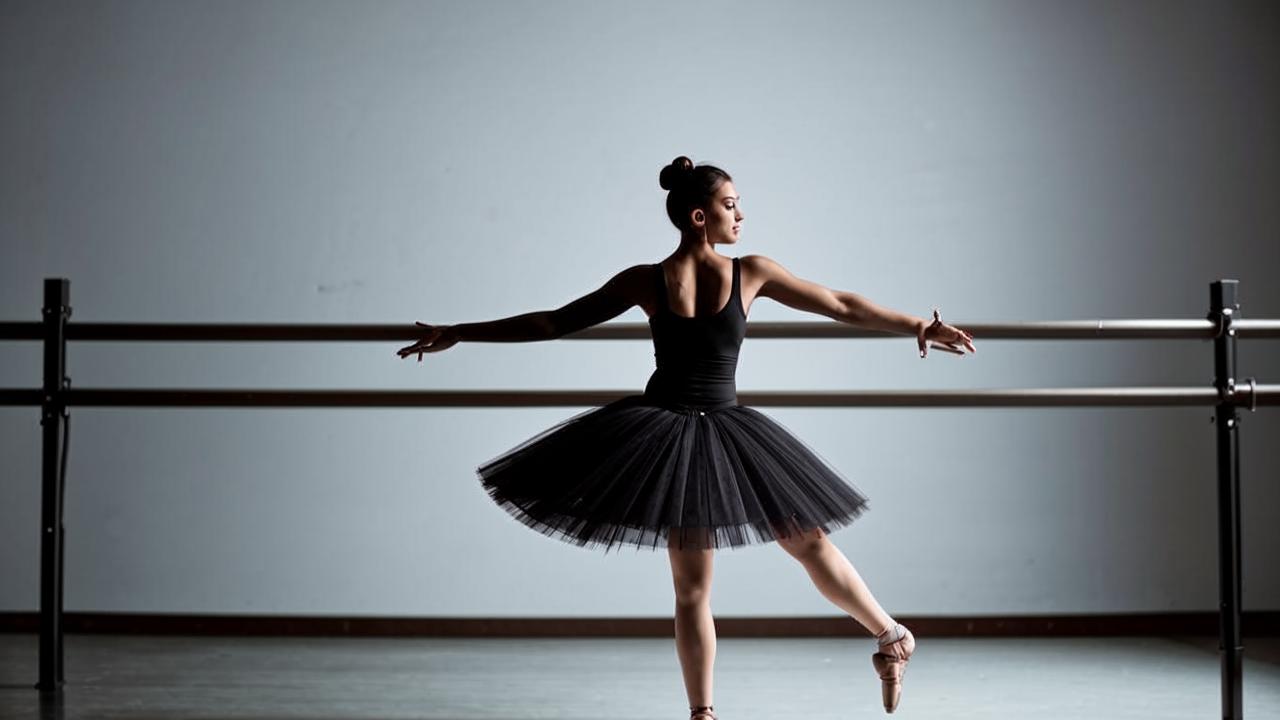
Vaja #9. Ravnotežje
Tehnika izvedbe
- Začetni položaj: pojdite na sredino dvorane ali se le malo oddaljite od opore, stojte v prvem položaju, roke razmaknite ali jih položite na pas.
- V tem položaju se poskušajte dvigniti na prste na nogah in ohraniti ravnotežje. Z vrhom glave se poskušajte čim bolj dvigniti navzgor. Vajo lahko izvajate samo na eni nogi, na primer na levi.
- Naj bo to podporna noga, desno nogo pokrčite v kolenu, prste pa držite na gležnju podporne noge. V tem položaju poskušajte ohraniti ravnotežje, ne da bi se usedli na podporno nogo ali se "nagnili" na stran.
Duration: 4 times for each leg.
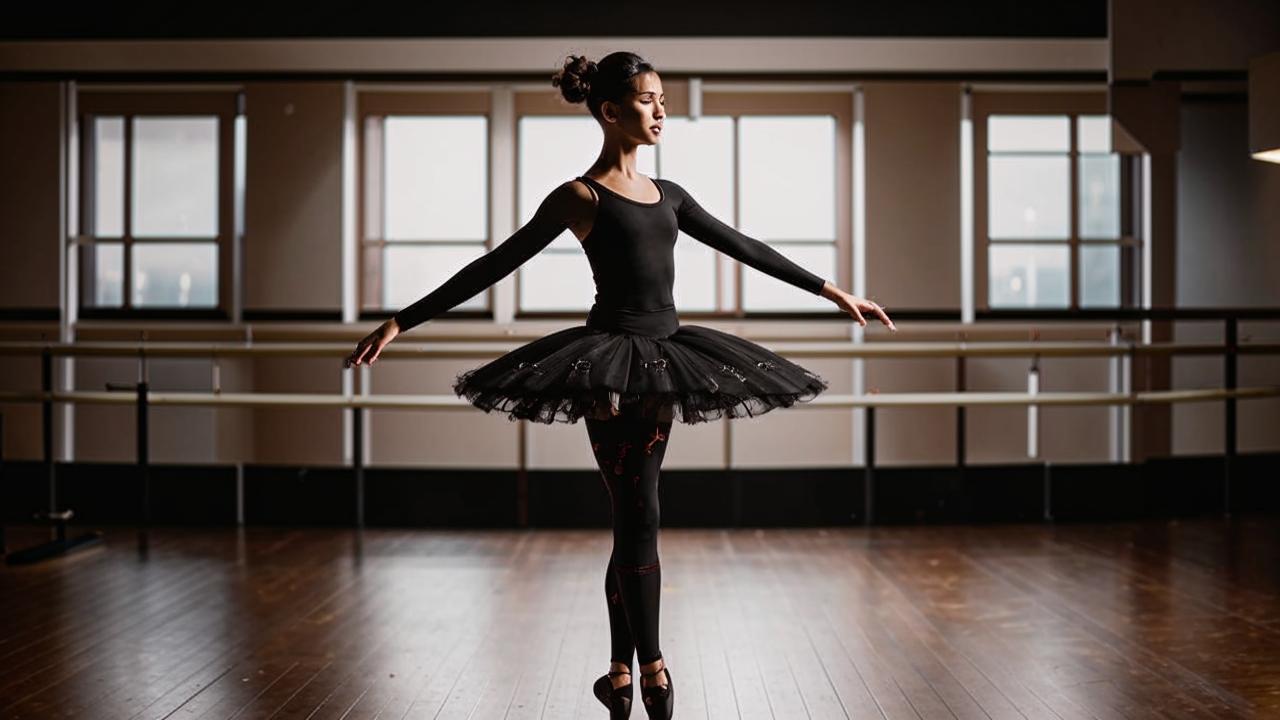
Vaja št. 10. Raztezanje na stroju
Zadnji del kompleksa je raztezanje, ki vam bo pomagalo lepo in gladko zaključiti vse prejšnje obremenitve ter odstraniti napetost iz mišic.
Trajanje: 4-krat na vsako stran.
Začetni položaj: izberete glede na razmere.
Če imate oporo, se ji približajte in nanjo položite eno nogo ter jo dodatno pritrdite z roko. Približajte telo opori in začnite izvajati nagibe telesa proti iztegnjeni nogi. Pomembno je paziti, da medenica ostane ravna, noga je bila usmerjena jasno naprej, ne v stran, hrbet ostane raven tudi v naklonu. Med izvajanjem vaje lahko prosto roko položite na iztegnjeno nogo. Poskusite se sprostiti in začutiti napetost na zadnji strani noge.
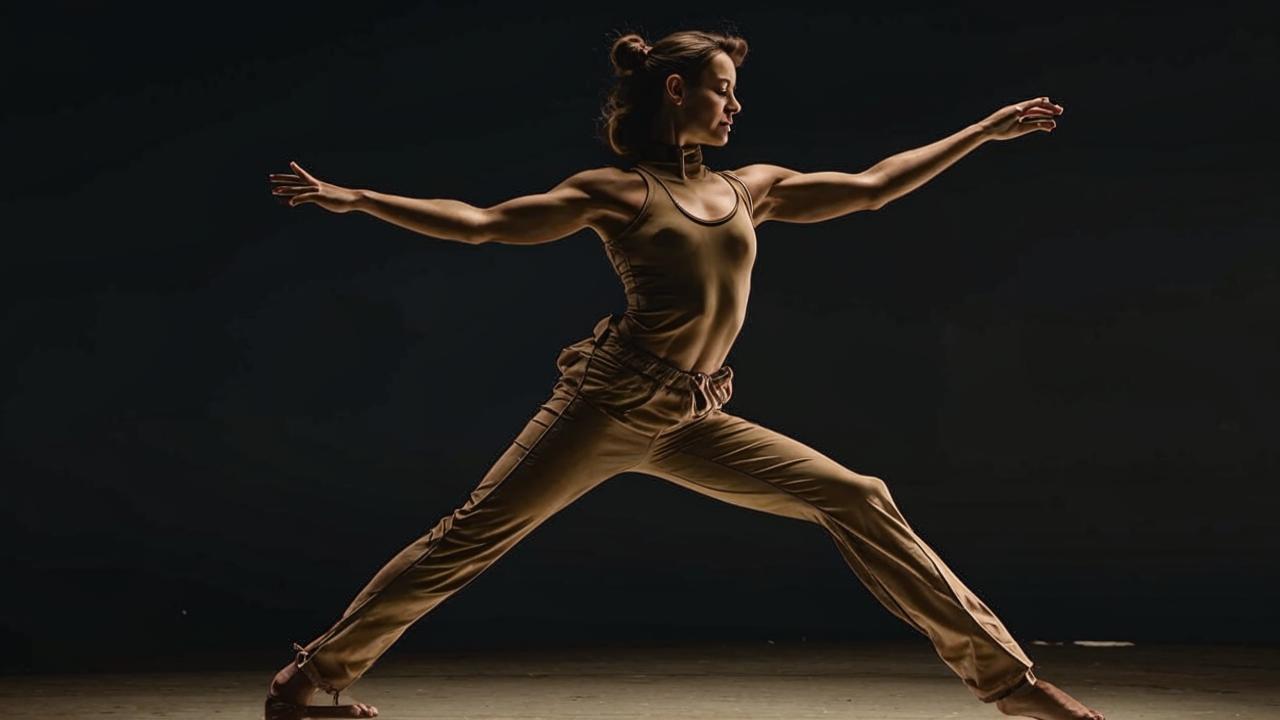
Drugi način je, da nogo dvignete vstran in naredite naklon v tej smeri. To pomeni, da telo nagnete vstran in pri tem raztegnete stranske mišice.
Za lažjo uporabo lahko štejete od osem do 16 ali pa za vsak položaj porabite od 30 do 40 sekund.
Celoten sklop vaj je namenjen oblikovanju močnih in močnih mišic, brez njihovega pumpanja in brez uporabe dodatne opreme. Pri tem vedno pazite na položaj telesa. Če začutite, da se vam otežuje in zaradi tega spremenite začetni položaj, potem si vzemite odmor ali pa zmanjšajte amplitudo gibov.
Če se vam kakšen gib zdi nejasen in mislite, da delate nekaj narobe, je bolje, da ga poenostavite ali preskočite. Število ponovitev je svetovalne narave, najprej se morate ravnati po svojih občutkih. Če vam je pretežko izvesti štiri prijeme, lahko izvedete dva. Ali pa, nasprotno, lahko izvedete več od določenega števila ponovitev, če v mišicah čutite moč - vse je individualno.






